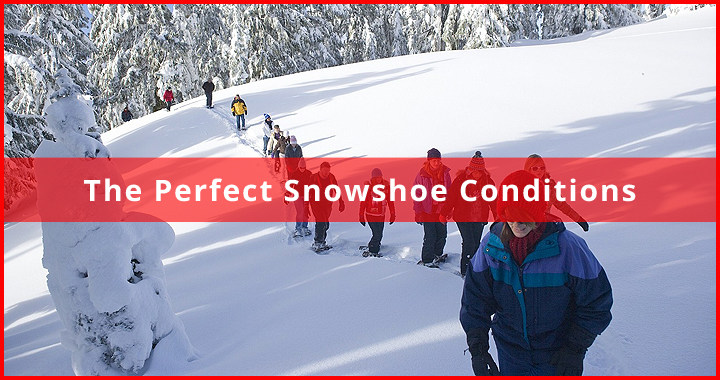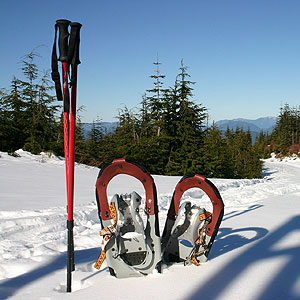
When it comes to outdoor sports, there are external factors that will affect you. Snowshoeing is no exception. And since it’s a winter-only sport, the weather can be twice as dangerous. Whether you snowshoe to have a casual trek in your backyard, or off an long trail in the backcountry, there are certain weather conditions to look for to have an excellent hike.
Keep Eyes on the Weather
 Being an outdoor sport, weather plays a huge part in your snowshoeing plan. You want to go snowshoeing under the best possible weather, which is a clear sky and minimum wind for an easy trek. Get a weather app that will give you real-time updates. A change in weather, no matter how slight, can greatly affect your plan.
Being an outdoor sport, weather plays a huge part in your snowshoeing plan. You want to go snowshoeing under the best possible weather, which is a clear sky and minimum wind for an easy trek. Get a weather app that will give you real-time updates. A change in weather, no matter how slight, can greatly affect your plan.
For example, a heavy snowfall happened at the night before your planned trip. This will cover some trail marks, making the trek harder than it should be. It also can be very dangerous since the snow can build up and cover some edges and holes.
A last-minute change in weather can also affect wind and overall temperature. You may need one or two extra layers of clothing. As you can see, the weather is not only affecting the trek, but also your comfort and safety.
For the best estimate and most recent update on the weather condition, you can call the park a day before you go and see if the trek is open and safe to go through.
The Snow for Snowshoeing
 Weather is not the only thing that you need to pay attention to. A clear sky with minimum wind can be the perfect weather, but it’s all rendered useless when there is no snow to trek. To snowshoe, the snow must be at least 4-inch’s thick. If the snow is more than 8-inch thick, you will need a snowshoe with the right traction as well as a trekking pole to help you.
Weather is not the only thing that you need to pay attention to. A clear sky with minimum wind can be the perfect weather, but it’s all rendered useless when there is no snow to trek. To snowshoe, the snow must be at least 4-inch’s thick. If the snow is more than 8-inch thick, you will need a snowshoe with the right traction as well as a trekking pole to help you.
Just like the trek isn’t always easy and flat, the snow is not always powdery. It can be hard and crusty or even wet. Snow can give a false impression on the terrain underneath your feet. So you have to stay alert even on powdery snow. Sometimes you will get to experience many types of snow in a single trek. This often happens when you trek on an area that is also a popular spot for skiers and snowboarders.
Always Come Well-Prepared
Good preparation means you are halfway ready for the trek. Always pack your gear based on necessity. Essential supplies like drink, medicines and trekking poles should be within arm’s reach for a moment’s notice. And if you plan to document your trip, make sure that you can operate your camera without taking your gloves off. Your safety is more important than taking a beautiful shot. Never underestimate a trek just because they are labeled as easy.
Getting the right snowshoe is more than just about calculating the total weight you’re carrying. But it’s also about the trek you are about to go to. Some snowshoes work better in flat terrain instead of a steep one and vice versa. Whether you buy or rent your snowshoes, make sure that you choose the right snowshoes for the trail.
